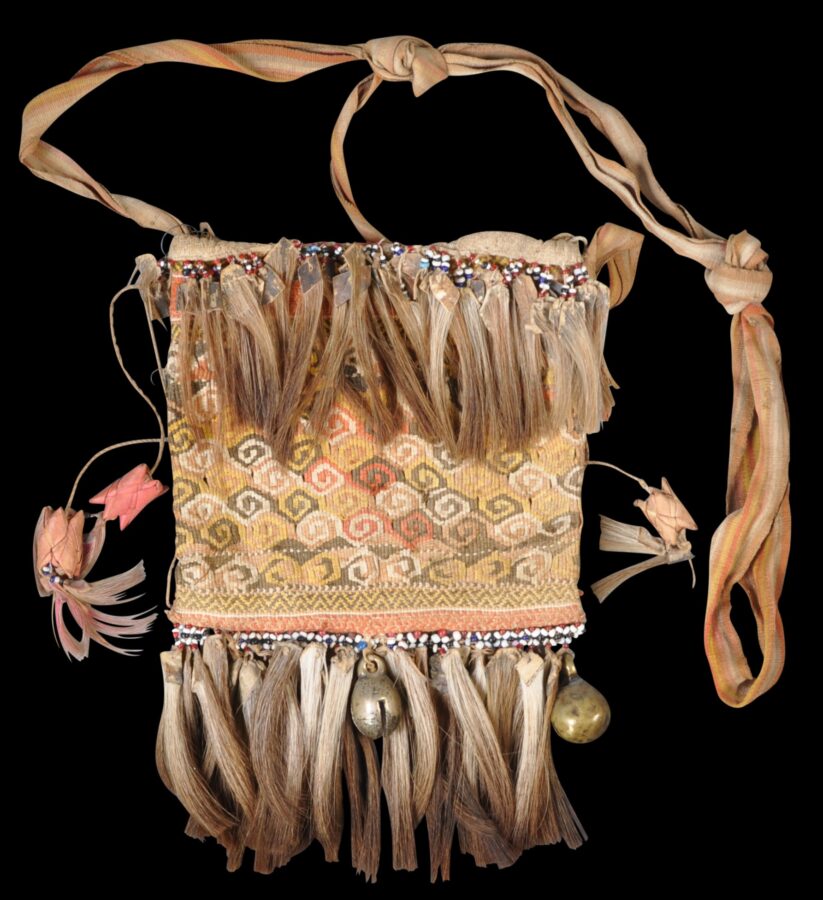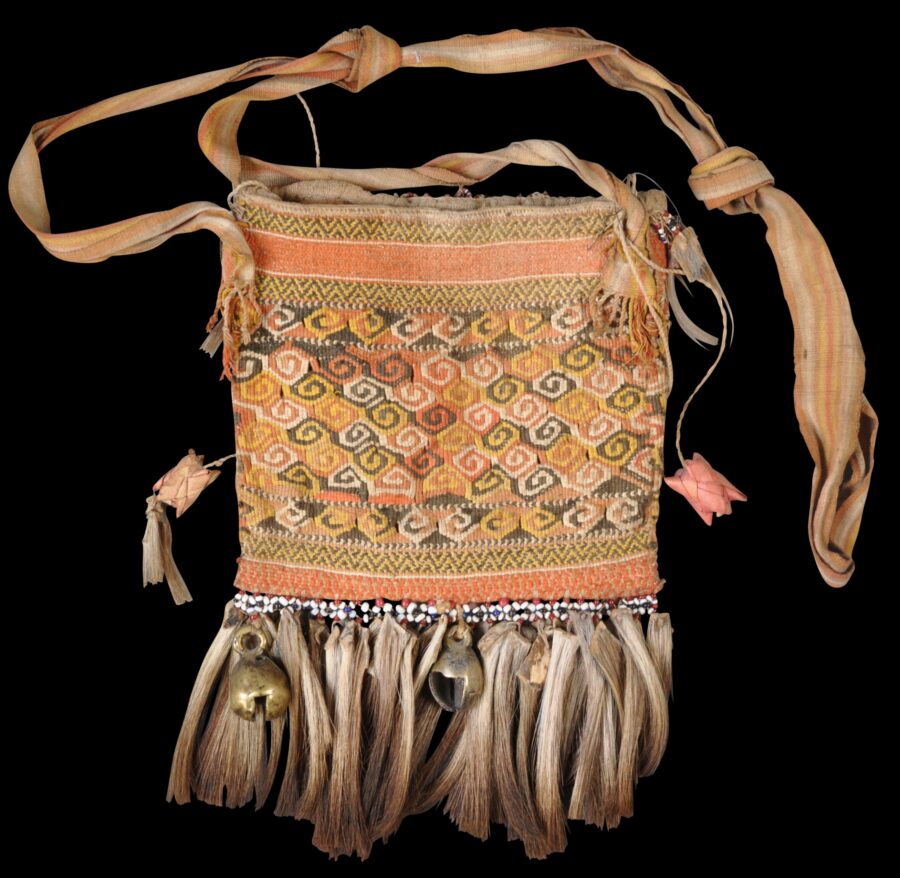Enquiry about object: 9596
Timorese Man’s Beaded Betel Shoulder Bag with Goat Hair Decoration (Alu Inu)
Atoni or Dawan People, Central Timor, Eastern Indonesia early to mid-20th century
length of bag (including tufts): approximately 24cm, width of bag: approximately 16cm, weight: 132g
Provenance
private collection, Amsterdam, Netherlands
This bag was used to hold the elements of the betel or sirih quid, a mild social stimulant that was chewed. It is from the Atoni or Dawan people of central Timor island, Eastern Indonesia.
Almost every man would have had a betel bag and traditionally, a Timor woman presented her husband-to-be with a woven betel bag as a token of her skill.
It comprises a woven textile woven in supplementary weft weave from hand-spun cotton dyed with natural vegetal dyes in a trellis like formation of geometric curls within borders of repeated triangle motifs.
The bag is further decorated with top and lower fringes of tufts of goat hair (each is still attached to a small segment of skin) as well as additional stringing of small read, white and black trade beads. There are also small packets woven from dyed pandan strips attached to the bag on long strings, as well as two large brass bells.
Such bags were used in conjunction with beaded lime containers such as these examples.
Similar examples are illustrated in Maxwell (2003, p. 93), and Brinkgreve & Stuart-Fox (2013, p. 291).
The bag is in very fine condition. There is some inevitable fading to the textile but the age of the item is very clear.
References
Brinkgreve, F., & D.J. Stuart-Fox (eds), Living with Indonesian Art: The Frits Liefkes Collection, Rijksmuseum Volkenkunde, 2013.
Maxwell, R., Textiles of Southeast Asia: Tradition, Trade and Transformation, Periplus, 2003.



